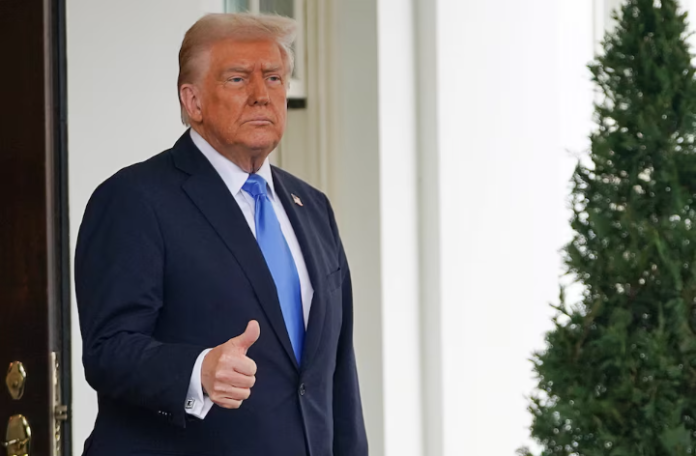President Donald Trump is reportedly considering reviving a long-forgotten 1930 trade law to impose new tariffs on foreign imports. The move, which trade experts say could significantly reshape U.S. trade policies, would allow Trump to impose tariffs of up to 50% on countries that discriminate against U.S. commerce.
Reviving a Decades-Old Trade Law
The law in question, Section 338 of the Trade Act of 1930, was designed to counter unfair trade practices by allowing the president to levy tariffs on countries that impose excessive regulations, taxes, or restrictions on U.S. goods. Although the law has never been used, it remains legally valid and could provide Trump with a rapid way to implement his new “reciprocal tariffs” policy.
The idea behind reciprocal tariffs is simple: if a country imposes higher import taxes on U.S. goods than the U.S. does on their goods, Trump believes America should match those rates. This could particularly impact trade with the European Union, which imposes a 10% tariff on U.S. automobiles, compared to the 2.5% tariff the U.S. charges on European cars.
Fast-Tracking Tariffs Without Congressional Approval
Unlike other trade measures that require lengthy investigations and public comments, Section 338 allows the president to impose tariffs within just 30 days. This makes it a more attractive tool compared to other legal avenues Trump has used in the past, such as Section 301 (which targets unfair trade practices) or Section 232 (used to impose tariffs on steel and aluminum).
According to trade law experts, Trump’s administration previously explored using Section 338 during his first term but opted for other measures. However, with a renewed focus on quick action, this old law may now serve as the foundation for Trump’s aggressive trade policy in his second term.
How This Could Impact Global Trade
If Trump follows through with this plan, the implications for global trade could be significant:
- Potential Trade Wars: Countries targeted by these tariffs may retaliate, leading to higher costs for businesses and consumers.
- Disruption of Global Supply Chains: Higher tariffs could make imported goods more expensive, affecting industries that rely on foreign materials.
- Challenges to the WTO System: The World Trade Organization (WTO) was founded on principles of Most Favored Nation (MFN) status, which ensures equal tariff treatment for all countries. Trump’s use of Section 338 could weaken this system and lead to more fragmented global trade policies.
A Step Backward in Trade Policy?

The 1930 law was originally part of a broader protectionist strategy that many economists believe worsened the Great Depression. After World War II, global economies moved toward standardized tariffs and free trade agreements to avoid the “beggar-thy-neighbor” policies of the past. A return to unilateral tariffs could disrupt decades of progress in international trade relations.
While Trump’s supporters argue that reciprocal tariffs will protect American jobs and industries, critics warn that it could spark a trade war and damage economic growth.
What Happens Next?
It remains unclear how broadly Trump will apply these tariffs or which countries will be targeted first. However, given his administration’s history of using aggressive trade policies, businesses and global markets are bracing for potential disruptions.
Will Trump’s new tariff strategy strengthen America’s economy, or will it trigger economic retaliation from global trading partners?



